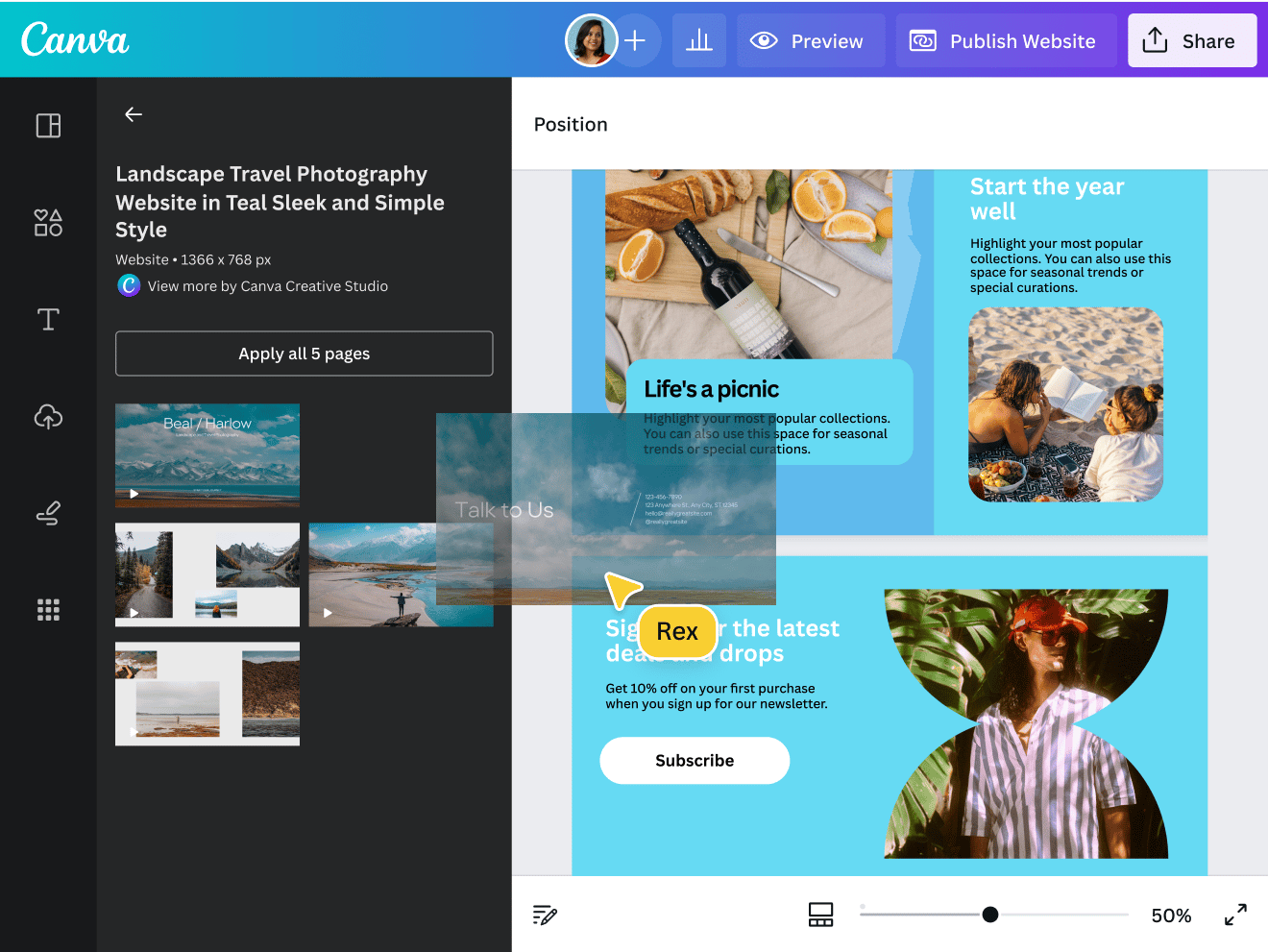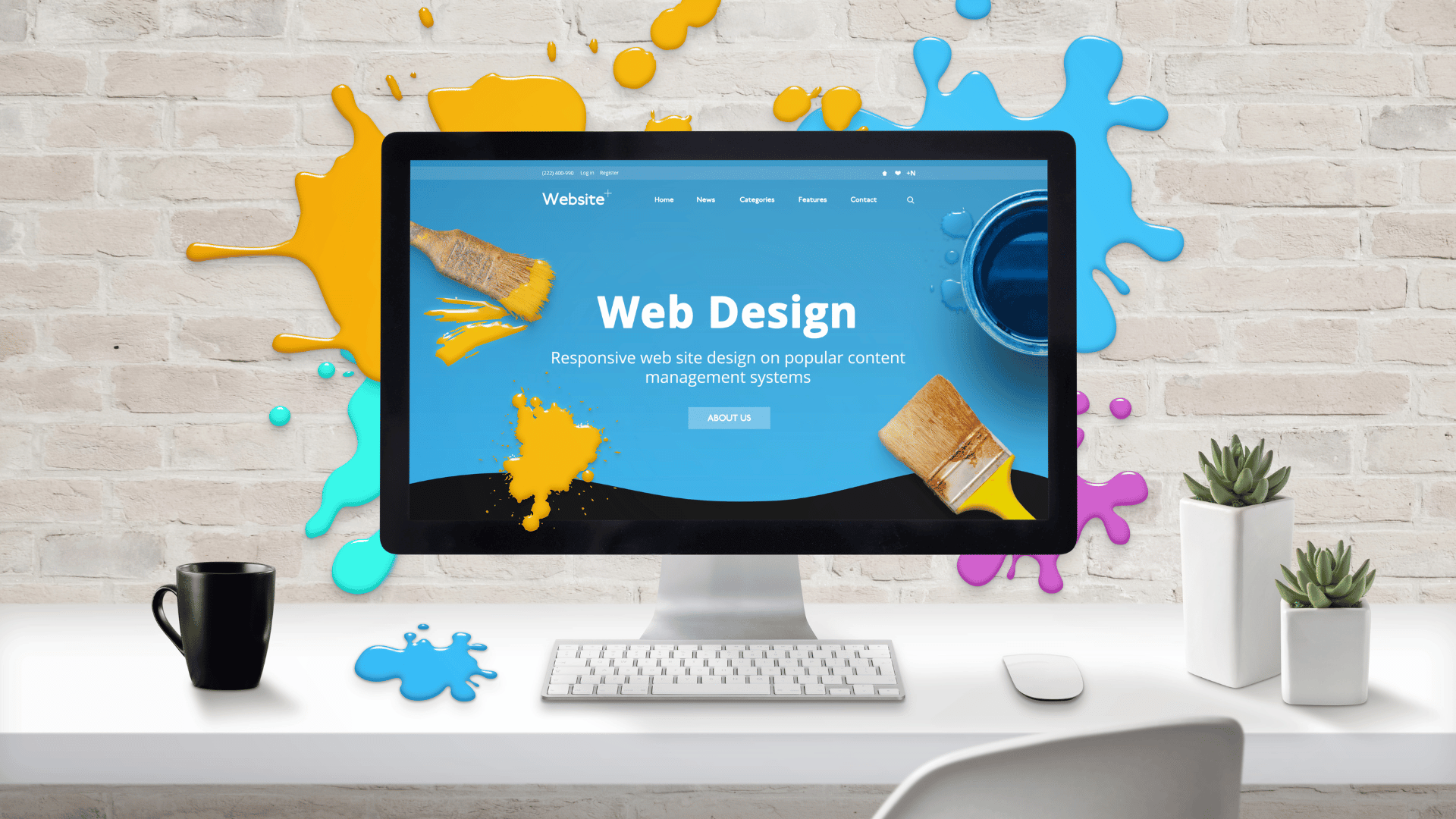Website Design London Ontario for Fast, Safe, and Expandable Sites
Comprehending the Crucial Element That Comprise Efficient Website Design Strategies
When it involves internet design, understanding the essential elements can make all the difference in customer interaction and satisfaction. You require to consider facets like instinctive navigation and responsive layout to create a smooth experience. However that's just the start. Each part plays a vital role in guiding users via your content and influencing their behavior. Interested regarding what actually drives these techniques? Let's explore deeper right into these essential aspects.
The Importance of Individual Experience (UX) in Internet Design
Individual experience (UX) is the backbone of efficient website design, forming just how visitors communicate with your site. When you focus on UX, you develop a room where individuals really feel comfortable, involved, and valued. A well-designed UX guarantees that your target market can easily navigate your web content, locate details swiftly, and enjoy their total experience.You must consider your individuals' choices and needs, as this understanding directly influences their satisfaction. By concentrating on components like lots times, mobile responsiveness, and access, you improve their experience considerably.Moreover, a favorable UX cultivates count on and urges repeat check outs, which can cause higher conversion prices. Bear in mind, customers will not be reluctant to leave your site for a rival if they encounter aggravation or complication. Eventually, spending in UX isn't almost aesthetic appeals; it's regarding developing a user-centric layout that keeps visitors coming back for even more.
Crafting User-friendly Navigating for Seamless Browsing
When developing an internet site, crafting intuitive navigating is vital for guaranteeing site visitors can find what they need without irritation. Begin by organizing your web content realistically; group relevant web pages together to aid customers anticipate where to discover information. Usage clear, concise labels for navigation links, avoiding lingo that might perplex your audience.Consider implementing a hierarchical structure with a main food selection and dropdowns for subcategories, making it simple to drill down right into details subjects. Incorporate a search bar to encourage users to discover material straight, particularly on bigger sites.Don' t fail to remember concerning mobile individuals; establish your navigating remains easily accessible on smaller displays. Keep it basic and consistent throughout all web pages to strengthen experience. By concentrating on these elements, you'll produce a smooth surfing experience that maintains site visitors involved and urges them to explore even more of what you need to provide.
Receptive Layout: Adapting to Various Tools
As the range of devices individuals make use of to access the internet proceeds to expand, ensuring your web site is responsive has actually never ever been extra critical. A receptive design suggests your website adapts effortlessly to different screen dimensions, from smart devices to desktops, giving an exceptional viewing experience. This adaptability not just enhances user satisfaction yet also improves your website's efficiency in internet search engine rankings.To create a responsive design, use adaptable grids and formats that automatically get used to the display's dimensions. Carry out CSS media questions to personalize styles based on gadget characteristics. Prioritize important content, ensuring it's conveniently accessible on smaller screens without frustrating individuals.
The Duty of Visual Power Structure in Effective Layouts
Aesthetic pecking order is necessary for leading your target market's interest where it matters most. By successfully making use of focal factors, typography, comparison, and shade, you can develop a design that interacts your message plainly. Let's check out exactly how these components function with each other to enhance your design.
Relevance of Focal Points
Focal factors are vital in internet design, directing users' interest to one of the most essential aspects on a page. By purposefully placing these focal factors, you produce a clear visual pecking order that improves customer experience. Consider what you desire your site visitors to see first-- whether it's a call-to-action button, a key image, or significant information.Using contrast, positioning, and dimension, you can accentuate these focal points, making them stand out. Bear in mind, the extra popular the centerpiece, the more probable individuals are to involve with it. A properly designed design not just captures interest yet also leads individuals via your material effortlessly, guaranteeing they absorb the information that matters most. Focusing on prime focus is essential for effective communication on your site.
Shade and Comparison Use
Reliable use shade and comparison can substantially influence exactly how users regard your site's content. By selecting a color scheme that straightens with your brand name, you create a psychological connection with visitors. High contrast in between text and history boosts readability, guaranteeing your message attracts attention. Usage contrasting colors to highlight crucial aspects, like call-to-action buttons, leading customers' attention where it matters most.Additionally, balance is crucial; way too much contrast can be frustrating, while insufficient might render your web content unseen. Implementing an aesthetic power structure with color helps users navigate your website intuitively. You want them to quickly compare headings, subheadings, and body message, which enhances their general experience. Inevitably, effective shade and contrast use maintains customers involved and motivates them to discover additionally.
Typography's Effect on Layout
While it's simple to forget, typography plays an essential role fit your site's layout and total individual experience. It establishes a visual power structure that guides site visitors through your material. By picking the right fonts, sizes, and styles, you can highlight key info and create a seamless flow. Making use of click here bigger headings assists users rapidly determine sections, while smaller sized body text supplies in-depth insights without frustrating them. Consistent typography not only enhances readability however also reinforces brand name identity. Bear in mind to balance ornamental typefaces with clarity to maintain professionalism. Eventually, reliable typography assurances your message resonates, making your website more interesting and user-friendly. Prioritizing this component can significantly boost your design method and impact.
Making Use Of Compelling Material to Involve Visitors
Just how can you keep your visitors engaged and coming back for more? The solution depends on compelling material. Start by understanding your target market and what interests them. Create useful write-ups, enthralling stories, or entertaining video clips that reverberate with their needs. Utilize a conversational tone to make your web content relatable; it should really feel like a friendly chat instead of a lecture.Incorporate visuals like images, infographics, and videos to separate message and maintain things dynamic. Don't fail to remember to welcome interaction-- ask concerns, motivate comments, or include polls to stimulate discussions.Also, focus on clarity and conciseness. See to it your bottom lines beam through without unneeded lingo or fluff. Keep in mind, high quality over quantity issues; it's better to have less, high-impact items than a multitude of average ones. Inevitably, when your material's interesting, site visitors will certainly not just stay however likewise share it with others.
The Impact of Color Psychology on Individual Interaction
Assume concerning exactly how they can affect user emotions and perceptions when you pick colors for your web site. Colors can enhance your brand name identification while additionally ensuring ease of access with contrast. Comprehending these aspects can considerably boost user interaction and engagement.
Shade Meanings and Emotions
Comprehending color psychology is crucial for developing an appealing web design, as the shades you pick can affect and evoke specific emotions customer communications. Various colors can set off numerous sensations; as an example, blue often conveys count on and calmness, while red can stimulate enjoyment or seriousness. When you integrate these colors thoughtfully, you lead your customers towards desired actions. Yellow can influence optimism and happiness, making it effective for contact us to activity, while green promotes relaxation and a connection to nature. By aligning your shade combination with the feelings you intend to elicit, you improve customer experience. Consider your target market and the message you want to share, ensuring your color selections resonate and produce a long lasting influence.
Brand Identity Via Color Styles

Shade Contrast and Access
While choosing a color palette is crucial, ensuring sufficient contrast is essential for accessibility. You desire your web site to be visually appealing, but it needs to additionally satisfy all customers, consisting of those with visual impairments. High comparison between message and history improves readability, making it much easier for every person to involve with your content.Think regarding color psychology, also. Various colors stimulate numerous emotions and reactions. By recognizing how shades effect user communication, you can lead customers toward wanted actions. For instance, using cozy colors can develop necessity, while amazing colors could impart peace. Always test your shade combinations to validate they satisfy access requirements, aiding you produce a comprehensive experience that reverberates with all visitors.
Optimizing Tons Rate for Enhanced Performance
Because customers expect web sites to load swiftly, optimizing lots rate is crucial for improving efficiency and individual complete satisfaction. A slow-loading website can annoy site visitors and drive them away, so you require to take activity. Start by pressing images and utilizing modern formats like WebP. This can considerably minimize file sizes without compromising quality.Next, minimize HTTP requests by integrating CSS and JavaScript documents. Fewer demands suggest quicker lots times (website design london Ontario). Executing lazy filling for videos and pictures warranties that material lots just when users scroll down, enhancing preliminary load speed.Additionally, leverage browser caching to save regularly accessed resources, enabling repeat visitors to appreciate faster filling times. Finally, choose a reliable holding supplier. Their efficiency directly affects your site's speed
Frequently Asked Concerns
Just How Can I Gauge the Performance of My Website Design Approach?
To gauge your web style technique's efficiency, track individual interaction metrics like bounce rates, conversion rates, and ordinary session duration. Usage devices like Google Analytics to collect insights and readjust your approach based on the information.
What Prevail Errors to Prevent in Internet Style?
In website design, stay clear of cluttered layouts, irregular typefaces, and sluggish loading times (website design london Ontario). Do not disregard mobile responsiveness or overlook user screening. Focus on access and warranty clear navigating to improve user experience and maintain visitors engaged
Just how Often Should I Update My Internet Site Style?
You ought to update your website style every 1 to 2 years, or whenever significant adjustments take place in your brand name or industry. Routine updates keep your website fresh, boost individual experience, and improve performance.

What Tools Can Assist Analyze Individual Actions on My Site?
To examine customer habits on your site, you can utilize tools like Google Analytics, Hotjar, or Crazy Egg. They'll supply insights right into customer interactions, aiding you make informed choices for enhancing your site's efficiency.

Exactly how Do I Pick the Right Font Style for My Site?
Choosing the appropriate typeface for your internet site entails taking into consideration readability, style, and alignment with your brand name. Explore various typefaces, verify they're legible on numerous devices, and preserve consistency throughout your web pages for a cohesive appearance. Integrate a search bar to equip customers to locate content directly, specifically on larger sites.Don' t neglect about mobile users; ascertain your navigating stays accessible on smaller sized screens. Reliable use of shade and contrast can substantially influence exactly how users view your website's web content (website design london Ontario). Understanding color psychology is crucial for developing an appealing internet design, as the shades you pick can evoke details emotions and affect user communications. By understanding how shades influence user interaction, you can lead customers toward preferred activities. Because customers anticipate websites to pack promptly, optimizing tons rate is critical for improving efficiency and customer fulfillment